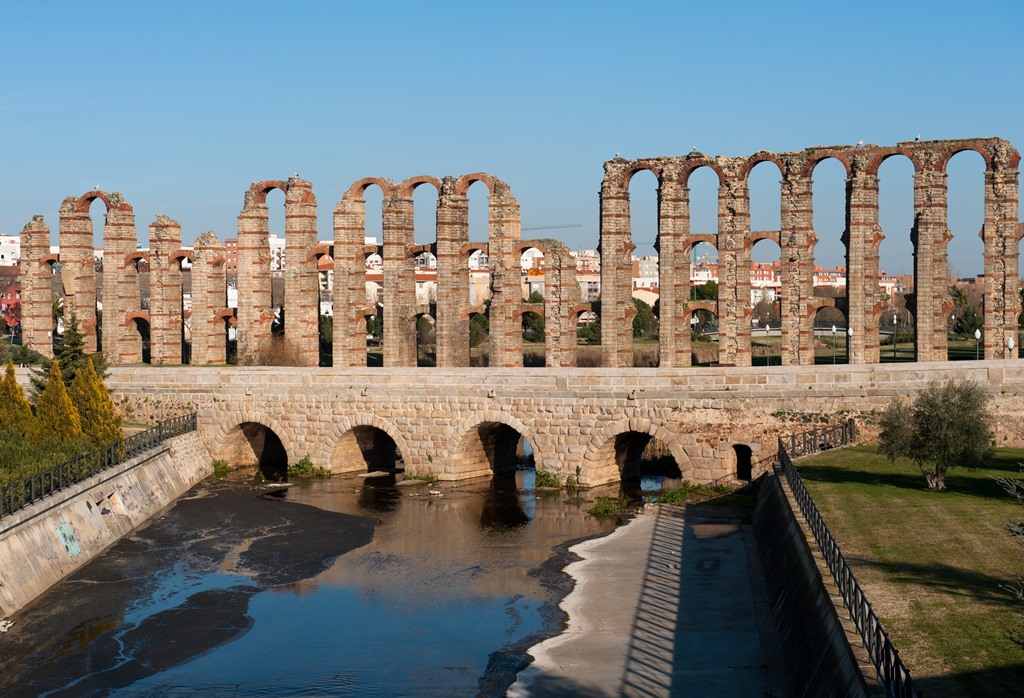Roman Bridge over Albarregas

Both the main road that separated the east part from the west part of the city, the kardo maximo, and another peripheral road that surrounded the city from the west met at this bridge. At this bridge the road towards Astorga started which is known as the Silver Route, a road which is partially preserved at some of the stretches at about three kilometres north of the city, going almost parallel to the A- Road 630.
The bridge is composed of four semicircular arches with ashlar voussoirs, a very common decoration during the Augustus era. It has a length of one hundred and forty-five meters, almost eight meters wide, more than enough distance for the loose passage of two cars.
Finally, the average height of the original building is six and a half meters. The parapet is not Roman work, possibly it will be carried out at the same time as the Cáceres road, whose first project dates from 1863.

Both the main road that separated the east part from the west part of the city, the kardo maximo, and another peripheral road that surrounded the city from the west met at this bridge. At this bridge the road towards Astorga started which is known as the Silver Route, a road which is partially preserved at some of the stretches at about three kilometres north of the city, going almost parallel to the A- Road 630.
The bridge is composed of four semicircular arches with ashlar voussoirs, a very common decoration during the Augustus era. It has a length of one hundred and forty-five meters, almost eight meters wide, more than enough distance for the loose passage of two cars.
Finally, the average height of the original building is six and a half meters. The parapet is not Roman work, possibly it will be carried out at the same time as the Cáceres road, whose first project dates from 1863.
Hours and Fees
Location





